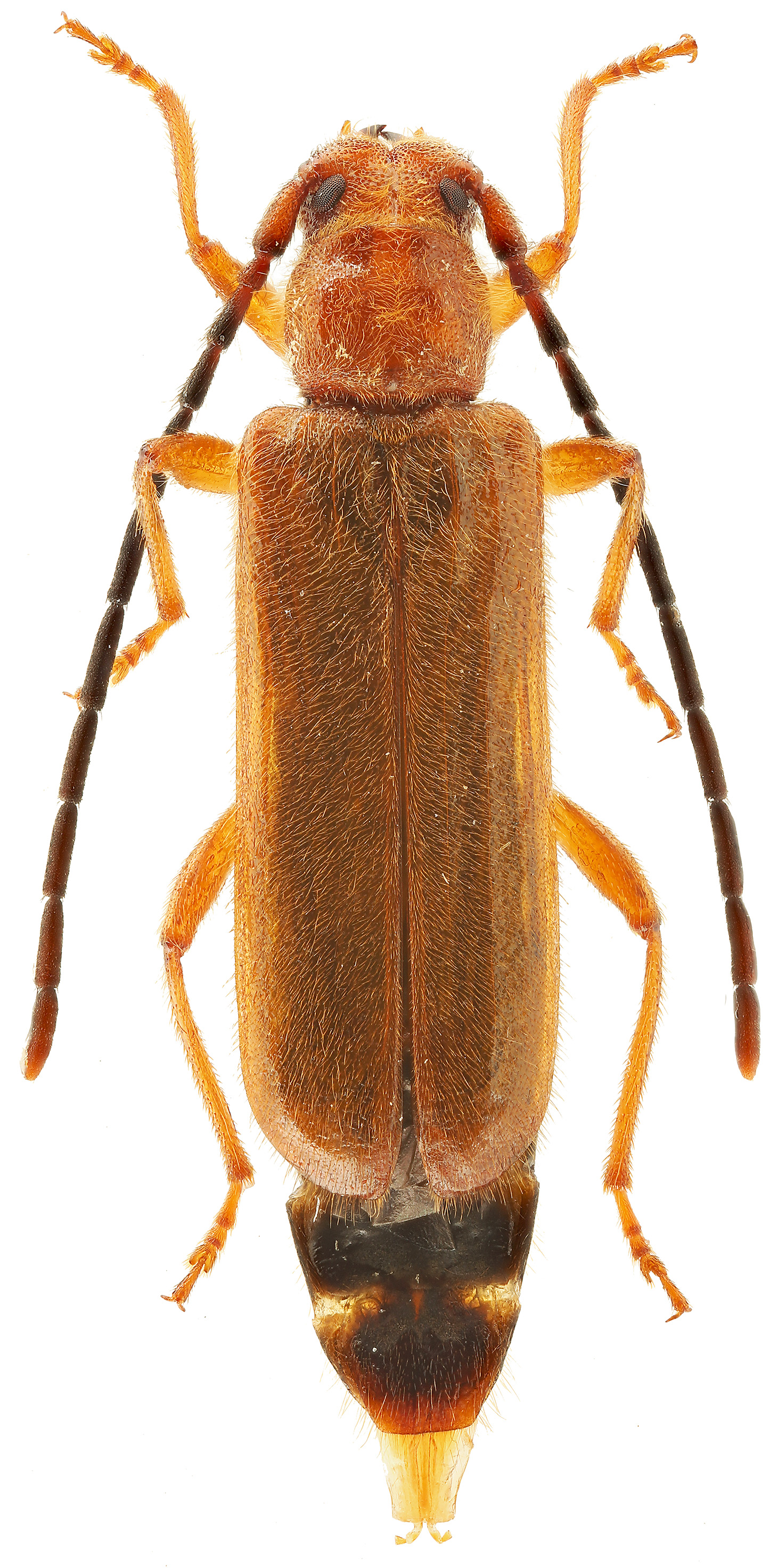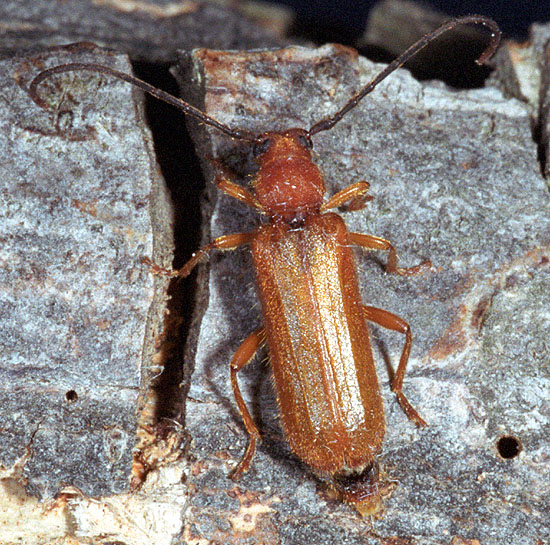Anisarthron cyrus, an endemic species to Azerbaidjan and N Iran, develops analogously to its close relative Anisarthron barbipes (Schrank, 1781).
Anisarthron cyrus is broadly polyphagous on deciduous trees preferring Fagus, Carpinus, Quercus, and Alnus. The limiting factor is the presence
of a substrate convenient for its development. It comprises dead red-brown moist wood of wounded living trees (bases of dead branches, wounds in
bark of trunks, etc.). The contact of the substrate with living tissue seems to be essential for the development of this beetle. The adult beetles are frequently found sitting on barkless wounds
of living trees.
| Body length: | 5 - 11 mm |
| Life cycle: | 2 - 3 years |
| Adults in: | May - July |
| Host plant: | polyphagous in deciduous trees |
| Distribution: | Talysh (Azerbaidjan), NW Iran |
The depicted mounted female beetle was collected in Golestan National Park (پارک ملی گلستان, Golestan province, North Iran) on May 25, 2016.
The living beetle was found sitting on a wound of a living Acer species in Chālūs environs (Chālūs county, Māzandarān province, North Iran).
Collected by D.Kasatkin and M.Rejzek
Villiers A.:
Un nouveau Longicorne d'Iran, Falsanoeme cyrus, n. gen., n. sp.
L'Entomologiste, Paris 27 (6): 153-155, 1971.
[download  ]
]
Danilevsky M.L.:
Longicorn beetles (Coleoptera, Cerambycoidea) of Russia and adjacent countries. Part 1.
Higher School Consulting, Moscow, 550pp [page 364], 2014.
[download  ]
]




